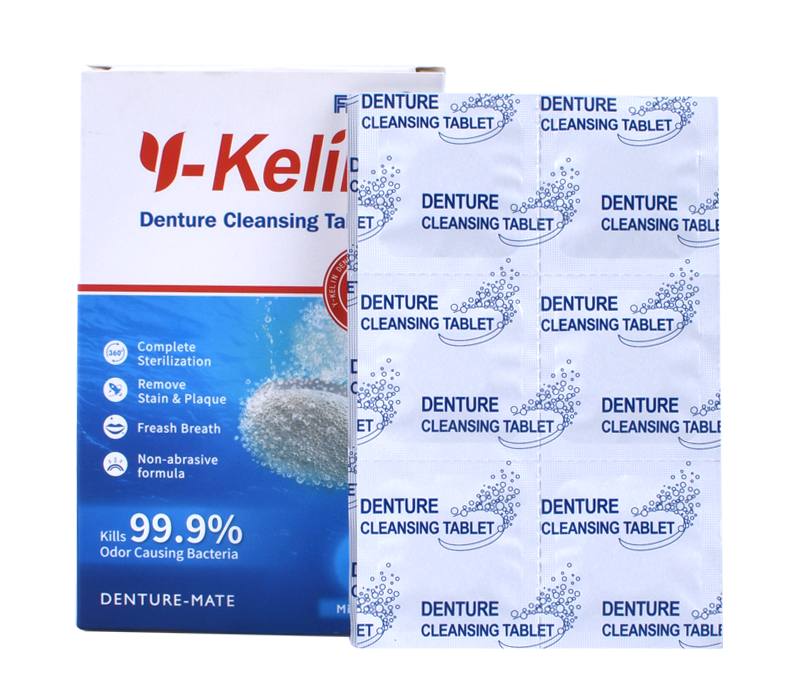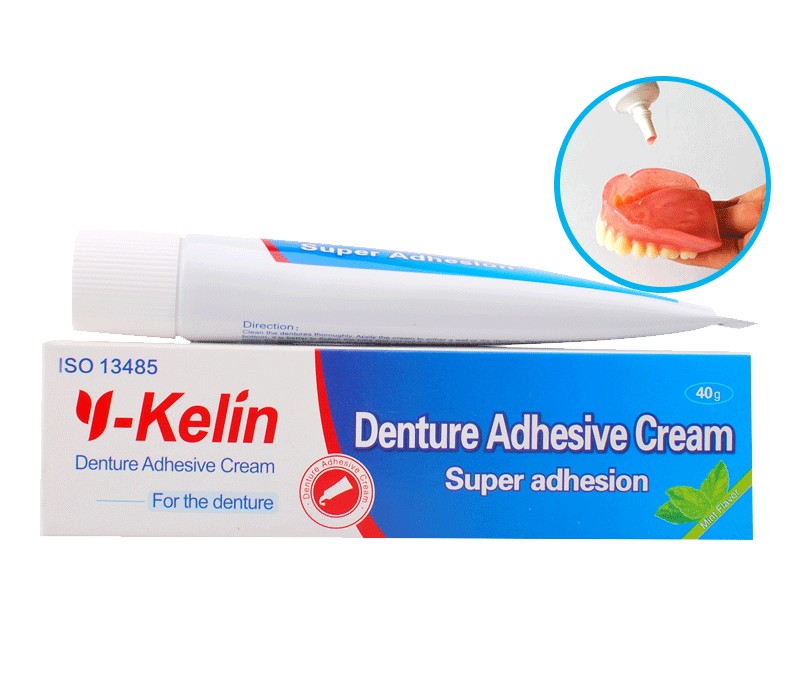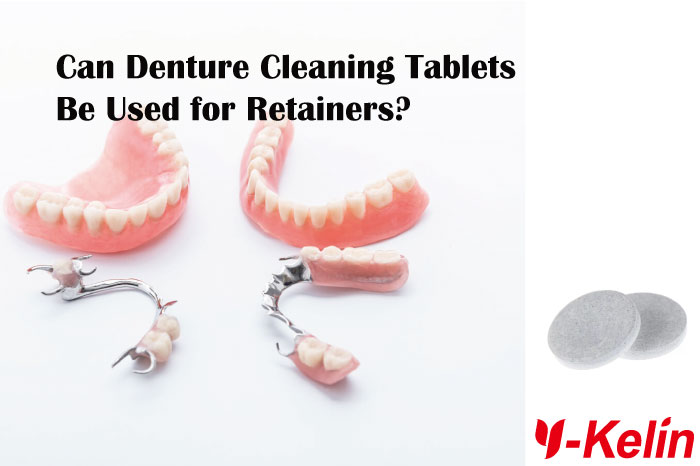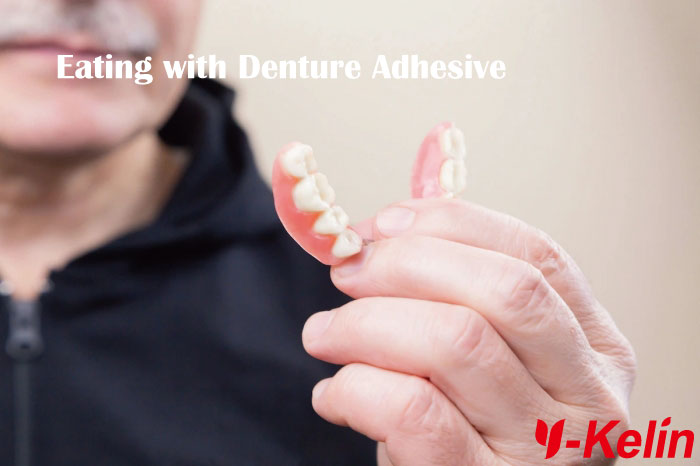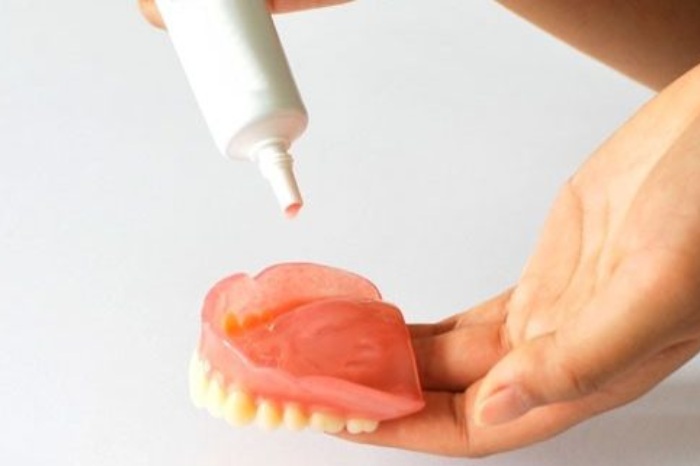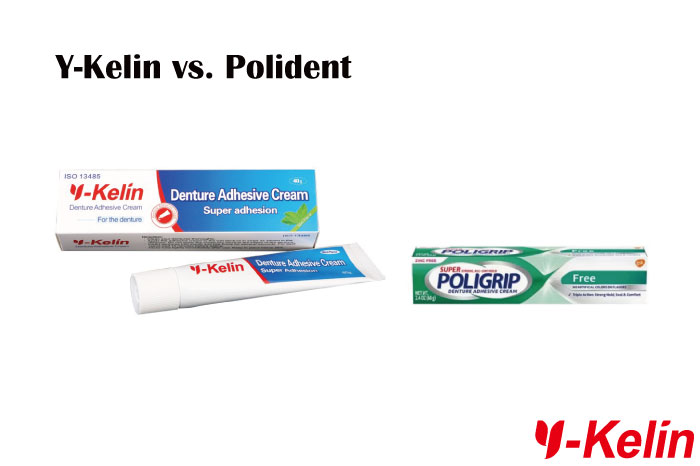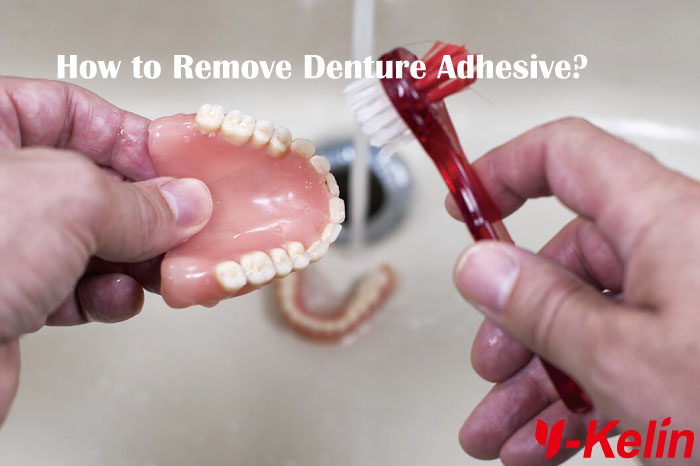
How to Remove Denture Adhesive?
Published On:
Denture adhesive can feel like a lifesaver—until it’s time to remove it. That sticky, stubborn residue can turn into an unexpected challenge, leaving you frustrated and questioning your oral care routine.
But here’s the thing: removing denture adhesive doesn’t have to be a battle. Whether you’re dealing with pastes, powders, or strips, knowing the right techniques can make all the difference.
In this guide, we’ll reveal expert tips to help you clean your dentures and gums effortlessly, ensuring your mouth stays fresh, healthy, and irritation-free.
Ready to unlock the secrets to hassle-free denture care? Let’s dive in.
Effects of Adhesive Residue on Oral Health
Adhesive residue might seem harmless, but over time, it can compromise your oral health. Leftover denture adhesive traps food particles, encouraging bacterial growth that leads to bad breath, gum irritation, and even infections.
If not properly removed, these residues can also disrupt your denture fit and make fresh adhesive less effective. Regularly cleaning your gums and dentures isn’t just about comfort—it’s essential for maintaining a healthy, hygienic mouth.
Why Adhesive Sticks to Gums and Dentures
The strong bonding capability that makes denture adhesive effective is also what makes it challenging to remove. Adhesives are designed to create a tight seal between the gums and dentures, forming a thin, stubborn film on both surfaces.
Factors like saliva, food debris, and prolonged wear further contribute to the residue’s stickiness. Understanding these elements helps you choose targeted techniques for easier removal, ensuring a fresh and comfortable experience every time.
Tools for Denture Adhesive Removal
Must-Have Tools for Denture Cleaning
To make denture adhesive removal easier, equip yourself with these essential tools:
- Soft-bristle toothbrush: Gentle on dentures and gums, ideal for scrubbing away adhesive residue.
- Damp washcloth: Perfect for wiping sticky residue off gums without causing irritation.
- Denture cleaning tablets: These dissolve in water and help break down adhesive while disinfecting your dentures.
- Denture cleanser solution: Effective for deep cleaning and removing stubborn residue.
- Non-abrasive brush: Useful for cleaning delicate denture surfaces without causing scratches.
Having these tools ready ensures a smooth, damage-free cleaning process.
Adhesive Remover for Dentures: What Works Best?
Explore these adhesive removal options for the best results:
- Denture adhesive removal wipes: Convenient for quickly wiping away adhesive remnants.
- Specialized adhesive dissolving solutions: Tailored for denture cleaning, these break down adhesive effectively.
- Warm saltwater rinse: A natural and gentle way to loosen adhesive from gums and dentures.
- Baking soda and water mix: Acts as a mild abrasive and cleanser for persistent residue.
- Denture cleaning tablets: Not only do they clean adhesive residue, but they also sanitize your dentures thoroughly.
These tools and solutions can simplify the process, ensuring your dentures and gums stay clean, fresh, and irritation-free.
Step-by-Step Guide to Removing Different Denture Adhesive
Denture adhesive use can be confusing due to conflicting advice and a wide range of products. Misusing adhesives may cause problems, while proper use improves comfort. Always check the manufacturer’s instructions, as each product may need a different removal method.
How to Remove Cream Adhesives
- Rinse with Warm Water: Swish warm water around your mouth to soften the adhesive and loosen its grip.
- Gently Remove Dentures: Use a rocking motion to carefully lift your dentures out of place.
- Clean Adhesive from Dentures: Brush your dentures with a soft-bristle toothbrush and warm water, avoiding abrasive cleansers.
- Clean Adhesive from Gums: Use a damp washcloth or a soft toothbrush to gently scrub your gums and palate in circular motions.
- Rinse Thoroughly: Finish by rinsing your mouth with warm water to ensure no residue remains.
These steps help you remove cream adhesives effectively, protecting both your dentures and gums.
How to Remove Strip Adhesives
- Rinse with Warm Water: Swish warm water in your mouth to loosen the adhesive strips.
- Gently Remove Dentures: Grip the dentures firmly and use a rocking motion to carefully lift them out.
- Peel Off the Strips: Remove the adhesive strips from the denture surface using your fingers or a soft cloth.
- Clean the Dentures: Use a soft-bristle toothbrush and denture cleaning solution or warm water to clean any residue.
- Clean Your Gums: Wipe your gums and palate with a damp washcloth or soft toothbrush to remove leftover adhesive.
- Final Rinse: Rinse your mouth thoroughly with warm water to ensure all traces of adhesive are gone.
How to Remove Powder Adhesives
- Rinse with Warm Water: Swish warm water around your mouth for 30–60 seconds to soften and loosen the powder adhesive.
- Gently Remove Dentures: Use a rocking motion to carefully lift your dentures out.
- Wipe Off Adhesive Residue: Use a soft, damp cloth to wipe off any powder residue from your dentures.
- Brush Your Dentures: Clean the denture surface with a soft-bristle toothbrush and warm water or denture cleaning solution to remove any remaining adhesive.
- Clean Your Gums: Gently scrub your gums and palate with a soft toothbrush or wipe with a warm, damp washcloth to clear any leftover adhesive.
- Final Rinse: Rinse your mouth thoroughly with warm water to ensure no residue remains.
Alternative Methods to Remove Denture Adhesive
Home Remedies for Denture Adhesive Removal
- Baking Soda Paste: Mix a small amount of baking soda with water to create a paste. Apply it to your gums and dentures to gently loosen adhesive residue.
- Olive Oil or Coconut Oil: Apply a small amount to a cotton ball and rub it over the gums to break down adhesive while moisturizing your skin.
- Aloe Vera Gel: Known for its soothing properties, aloe vera can help dissolve adhesive while calming irritated gums.
- White Vinegar Solution: Dilute vinegar with water and use it to clean dentures, effectively breaking down sticky residue.
The Role of Mouthwash in Adhesive Removal
- Refreshing and Effective: Mouthwash not only freshens your breath but also helps loosen adhesive residue from gums and dentures.
- Antibacterial Properties: Many mouthwashes help kill bacteria that may accumulate due to leftover adhesive.
- How to Use: Swish mouthwash in your mouth for 30 seconds, focusing on areas with adhesive, then rinse thoroughly with water.
How a Saltwater Rinse Can Help
- Simple Yet Powerful: Saltwater is a natural and gentle solution for loosening denture adhesive while soothing gums.
- How to Prepare: Mix half a teaspoon of salt into a glass of warm water until dissolved.
- Application: Swish the saltwater in your mouth for 1-2 minutes to break down adhesive and promote oral health.
- Double Benefit: Saltwater also reduces inflammation and prevents bacterial growth, making it a versatile remedy.
Preventing Adhesive Buildup
Choosing the Right Denture Adhesive Brands
- Look for Trusted Brands: Opt for well-known denture adhesive brands like Fixodent, Y-Kelin, Polident, or Secure, as they provide reliable hold and are easier to clean.
- Zinc-Free Options: Choose adhesives labeled zinc-free to avoid potential health risks from prolonged use.
- Consider Your Needs: Evaluate whether a cream, powder, or strip adhesive suits your preferences and offers easy removal.
Best Practices for Applying Denture Adhesives
- Use the Right Amount: Apply only the recommended amount of adhesive to prevent excess residue. A few small dots or a thin layer is usually sufficient.
- Even Application: Spread the adhesive evenly on the denture to ensure a good seal without overflow.
- Dry Before Applying: Ensure your dentures are dry before applying adhesive, as moisture can reduce effectiveness.
- Daily Removal: Remove adhesive and clean your dentures every evening to prevent buildup and maintain oral health.
Tips for Maintaining a Denture Care Routine
- Daily Cleaning: Clean dentures with a soft brush and denture cleaning tablets to remove adhesive and prevent residue buildup.
- Regular Gum Care: Rinse your mouth and clean gums daily with a soft toothbrush or damp washcloth.
- Soaking Routine: Soak dentures overnight in a denture cleanser solution to sanitize and keep them fresh.
- Frequent Checkups: Visit your dentist regularly to ensure your dentures fit properly and discuss any adhesive concerns.
Caring for Gums After Adhesive Removal
Safe Methods for Gum Protection and Cleaning
- Rinse Thoroughly: After removing dentures, rinse your mouth with warm water to flush out any remaining adhesive.
- Use Gentle Products: Opt for non-abrasive cleansers or natural solutions like aloe vera gel to clean gums without irritation.
- Massage Your Gums: Gently massage gums with your fingers or a soft cloth to stimulate blood circulation and keep them healthy.
Using a Soft Toothbrush for Gums and Palate
- Choose the Right Brush: Use a soft-bristle toothbrush designed for sensitive oral tissues.
- Brush Gently: Clean gums and palate using gentle, circular motions to remove adhesive residue without causing discomfort.
- Add Toothpaste Sparingly: A pea-sized amount of non-abrasive toothpaste can aid in cleaning while refreshing your mouth.
Avoiding Irritation from Adhesive Removal
- Skip Harsh Methods: Avoid using sharp objects or excessive force to remove adhesive, as this can damage gum tissues.
- Hydrate and Soothe: After cleaning, apply a soothing balm or moisturizer like coconut oil to calm any minor irritation.
- Adjust Your Routine: If adhesive removal regularly causes irritation, consult your dentist for alternative adhesive options or application methods.
Taking proper care of your gums ensures they remain healthy, comfortable, and ready for daily denture use. A little extra attention goes a long way in maintaining oral hygiene and avoiding discomfort.
Maintaining Proper Denture Fit
How to Improve Denture Fit Without Adhesives
- Regular Denture Soaking: Use denture cleaning tablets to keep dentures clean and ensure their surface remains smooth for better adherence to your gums.
- Optimal Gum Health: Maintain healthy gums by cleaning them daily, as well-fitted dentures rely on firm and consistent gum support.
- Stay Hydrated: Adequate hydration helps maintain saliva levels, which act as a natural sealant between your gums and dentures.
- Consider Denture Stabilizers: Stabilizers or liners can provide added security without relying on adhesives.
When to Consider Denture Adjustments or Replacement
- Signs of Poor Fit: If dentures feel loose, cause discomfort, or require excessive adhesive for stability, it’s time to evaluate their fit.
- Bone Structure Changes: Over time, your jawbone naturally shrinks, altering how dentures fit and necessitating a professional adjustment.
- Routine Checkups: Schedule regular visits with your dentist to ensure your dentures are properly aligned and functioning effectively.
- Replacement Timeline: Most dentures need replacing every 5-7 years. Worn or damaged dentures not only impact fit but can also harm oral tissues.
By addressing denture fit proactively, you can avoid discomfort, reduce reliance on adhesives, and maintain optimal oral health. Properly fitted dentures are key to confidence and daily comfort.
What You Need to Know About Denture Adhesives
Denture adhesives secure dentures, creating a seal that enhances stability and prevents irritation from trapped food particles. Available as creams, powders, strips, and pads, they cater to various preferences and needs. Proper application is key—using too much can cause discomfort and leave residue, while the right amount ensures functionality.
While adhesives offer a temporary fix for loose dentures, they shouldn’t replace professional adjustments. Many modern adhesives are zinc-free, providing safer options for daily use. Regular removal and cleaning maintain oral hygiene, protect gums, and keep dentures in top condition, ensuring a comfortable, long-lasting fit.
What You Need to Know About Denture Cleansers
Denture cleansers are crucial for keeping dentures clean and hygienic. They remove food particles, adhesive residue, and bacteria, preventing odors and infections. Available as tablets, creams, or solutions, these products are designed to clean effectively without damaging dentures.
Denture cleaning tablets are particularly popular, dissolving in water to disinfect and remove debris. Always follow the manufacturer’s instructions and rinse dentures thoroughly before use.
Regular cleaning with the right cleanser keeps dentures fresh, extends their lifespan, and supports overall oral health.
Choosing the Right Products
Comparing Denture Cleaning Products
- Denture Cleaning Tablets: Effective for dissolving adhesive and sanitizing dentures overnight, ensuring thorough cleaning.
- Non-Abrasive Cleansers: Protect dentures from scratches while efficiently removing residue.
- All-in-One Products: Multipurpose cleansers that clean, deodorize, and protect dentures in one step.
- Cost and Availability: Compare prices and reviews to select affordable, easily accessible products.
Finding Products for Adhesive-Free Dentures
- Stabilizing Liners: Provide a secure fit without the sticky residue left by adhesives.
- Cushion Pads: Enhance comfort and reduce the need for adhesives, ideal for sensitive gums.
- Custom-Fit Dentures: Professionally fitted dentures often eliminate the need for adhesive products altogether.
Adhesive Pads and Alternatives to Creams
- Denture Adhesive Cream: Offers a reliable, long-lasting hold while providing cushioning for gums. Ideal for those needing daily denture stability.
- Adhesive Pads: Pre-cut strips that ensure even application and are simpler to remove than creams.
- Powder Adhesives: A lightweight alternative that forms a strong seal and is easier to clean than cream-based adhesives.
- Silicone-Based Adhesives: Long-lasting and gentle on gums, these are a great option for sensitive users.
Choosing the right products, whether adhesive-free solutions or effective adhesives like denture adhesive creams, ensures a comfortable, hygienic, and hassle-free denture experience. Tailoring your choices to your specific needs can make all the difference in daily wear.
FAQ - Denture Adhesive and Cleaning
What is denture adhesive, and why do I need it?
Denture adhesive is a product used to secure dentures in place, creating a seal between the gums and dentures. It improves stability, prevents food particles from getting underneath, and enhances comfort during daily activities like eating and speaking.
How do I remove denture adhesive from my dentures and gums?
Swish warm water to loosen adhesive, then gently remove your dentures using a rocking motion. Use a soft toothbrush or a damp washcloth to clean adhesive residue from both dentures and gums.
Are there different types of denture adhesives?
Yes, denture adhesives come in forms like creams, powders, strips, and pads. Each type offers unique benefits, so choose based on your comfort and ease of use.
Are there any risks associated with using denture adhesive?
Overusing adhesive can leave excess residue, cause discomfort, and make removal difficult. Some adhesives contain zinc, which may lead to health concerns if used excessively. Opt for zinc-free adhesives when possible.
How often should I clean my dentures?
Clean your dentures daily to remove food debris, bacteria, and adhesive. Soaking them overnight in a cleanser solution also helps maintain their condition.
Regular care and proper use of adhesives and cleansers ensure a comfortable, hygienic denture experience.
Y-Kelin Denture Adhesive Cream
Y-Kelin Denture Adhesive Cream offers a strong, reliable hold for dentures, ensuring comfort and confidence throughout the day. Made with a specially designed formula, it helps keep dentures securely in place, preventing slipping or discomfort.
Get in Touch with Y-Kelin
Have questions or need more information? Contact us today, and our dedicated team will assist you promptly.


Y-Kelin is a trusted manufacturer of high-quality denture care products, including denture cleaning tablets, adhesive creams, and retainer cleaning solutions, offering customized services for global partners.
